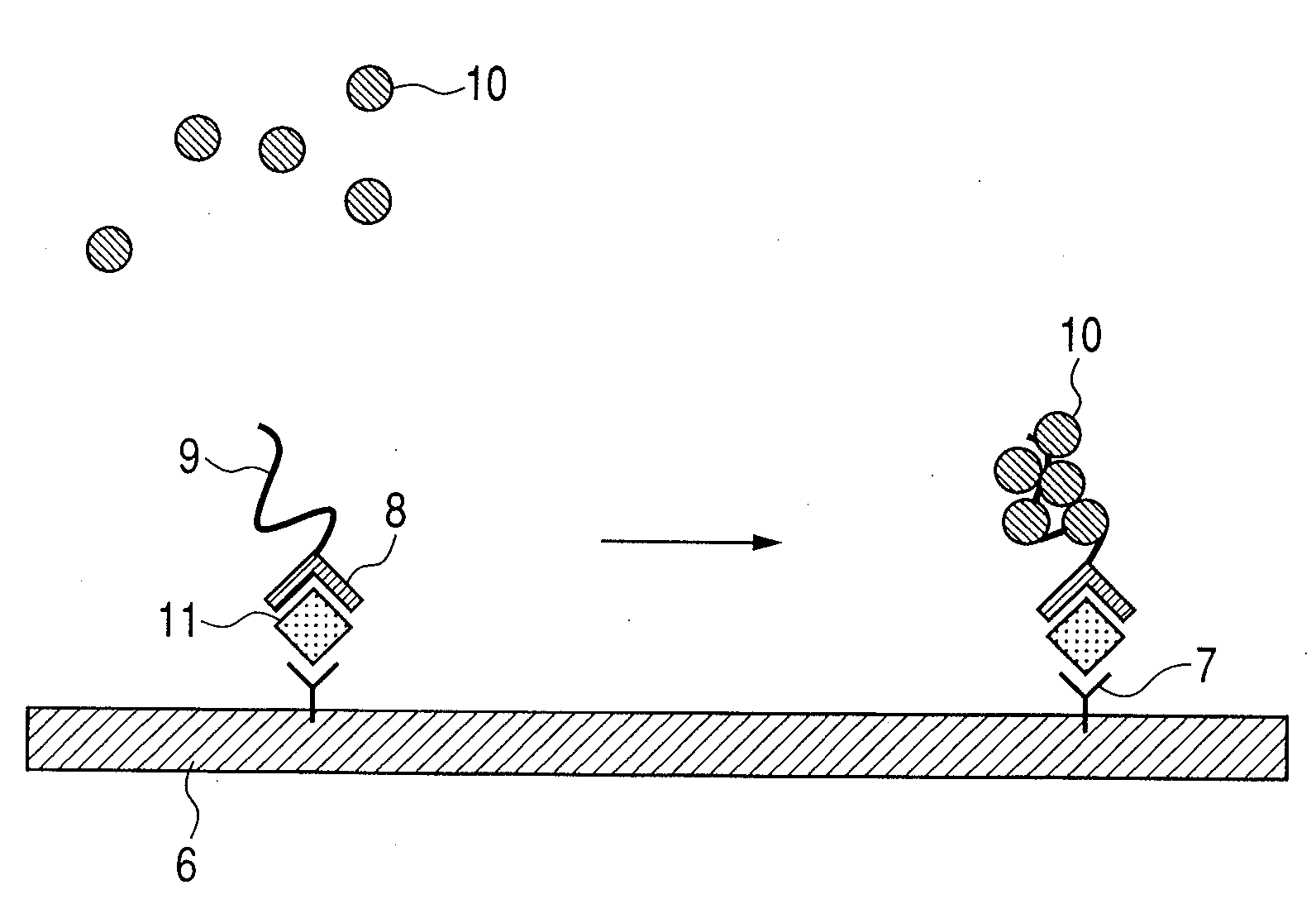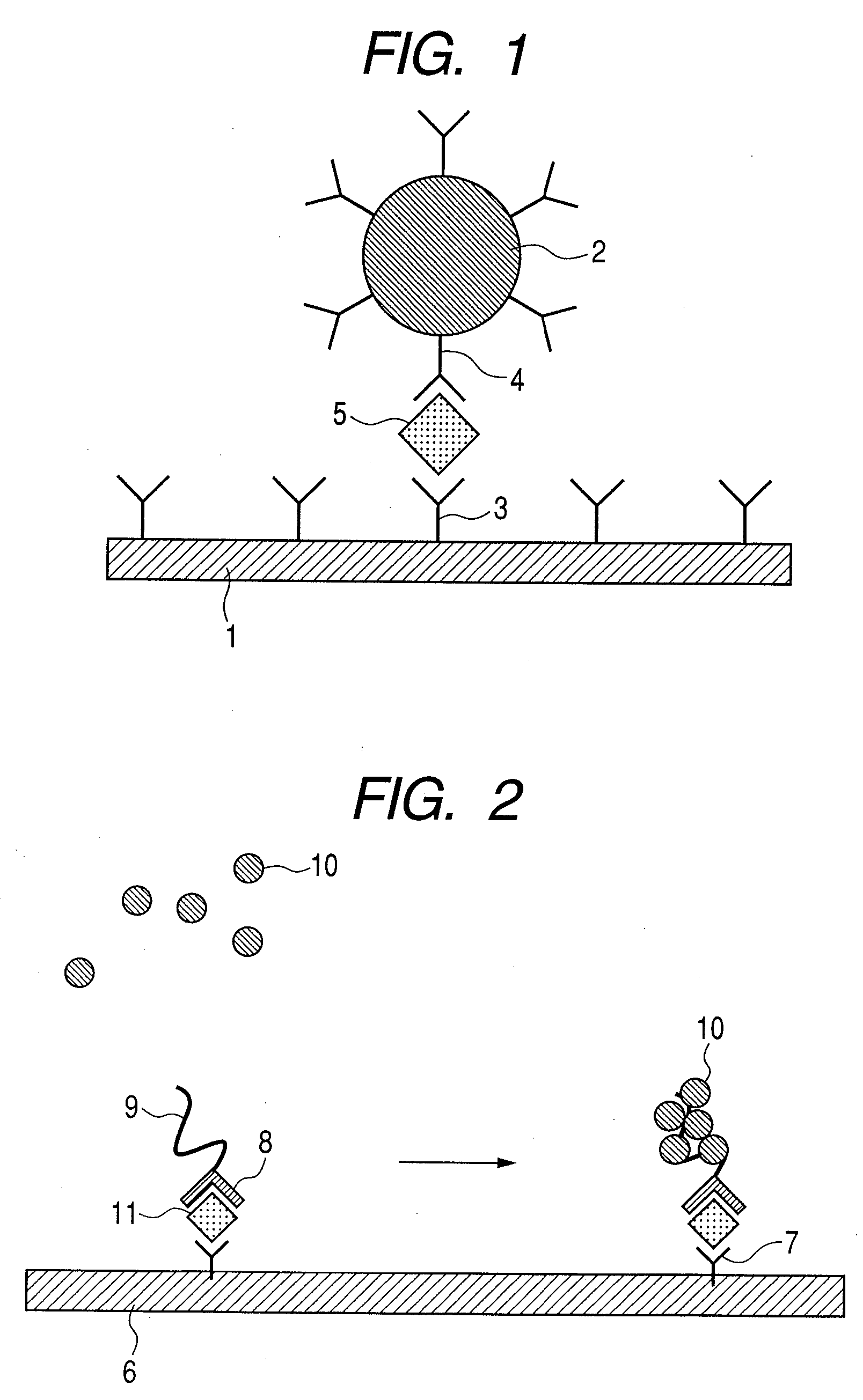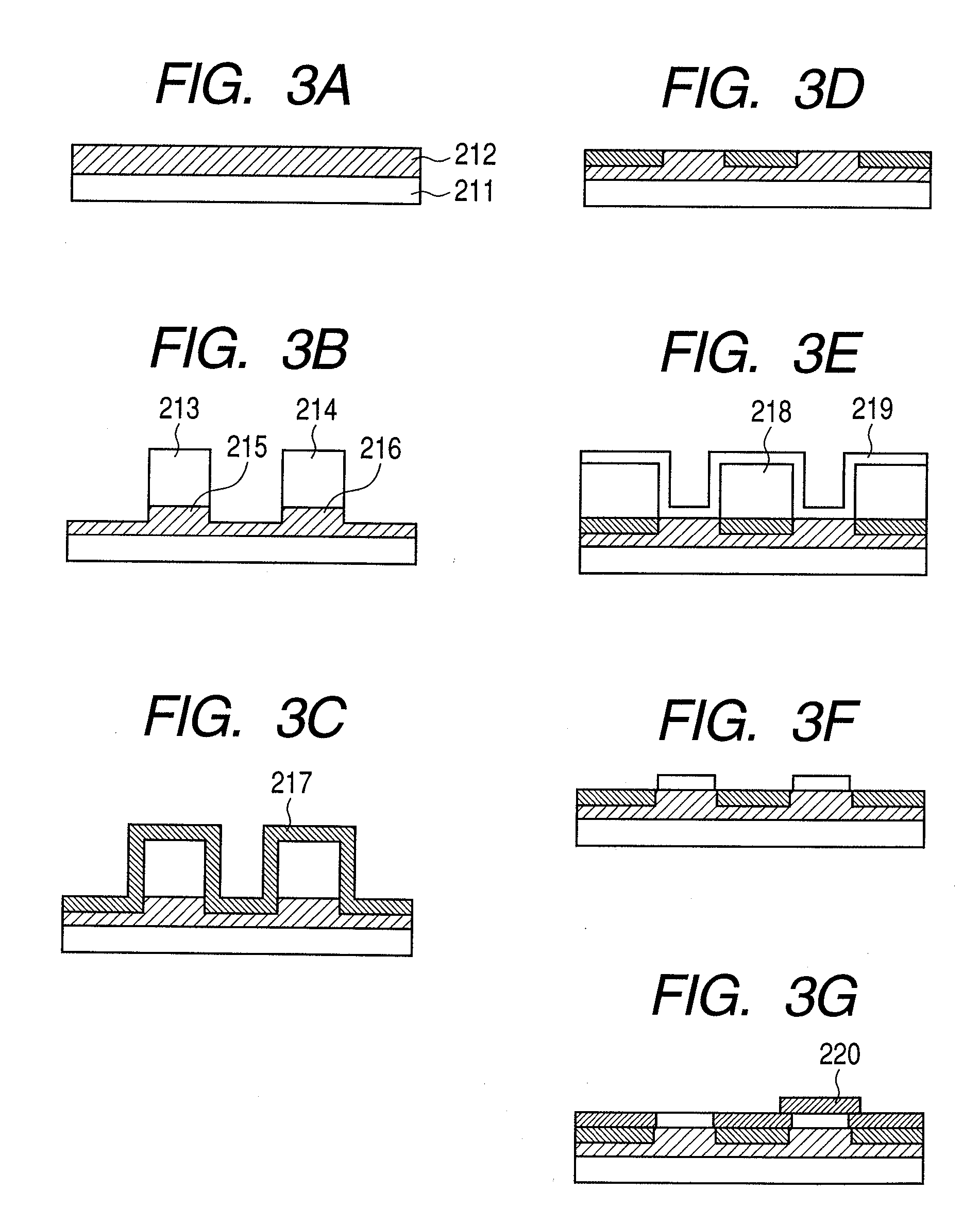Material for improving sensitivity of magnetic sensor and method thereof
a magnetic sensor and sensitivity technology, applied in the field of materials for improving the sensitivity of magnetic sensors, can solve the problems of deterioration of reactivity and dispersibility, difficulty in size and weight reduction, and high running cost, and achieve the effect of high sensitivity, maintaining reactivity and dispersibility, and improving detection sensitivity
- Summary
- Abstract
- Description
- Claims
- Application Information
AI Technical Summary
Benefits of technology
Problems solved by technology
Method used
Image
Examples
example 1
[0116]The present embodiment is an example to manufacture a magnetic marker at least partially containing the sensor element including a primary antibody capturing hen egg white lysozyme (HEL), a secondary antibody fragment capturing HEL labeled with polyaspartic acid, and ferrite particles, and to detect HEL as a sensor. In addition, a magnetoresistance effect element is used as the detection system of the sensor.
[0117]>
[0118](1) Preparation of an Anti-HEL Antibody Fragment Labeled With Polyaspartic Acid (Single Chain Fv: scfv)
[0119](1-1) Production Process of a Fusion Polypeptide
[0120]A gene expression vector is constructed based on the pGEX-6P-1 (Amersham Biosciences Plc) vector to allow expression of the gene encoding the fusion polypeptide, wherein a scFv peptide of HyHEL10 represented by SEQ ID NO:1 (whose gene sequence is represented by SEQ ID NO:2) is bound to a polyaspartic acid described in SEQ ID NO:3 (whose gene sequence is represented by SEQ ID NO:4) via a linker (whose...
example 2
[0145]>
[0146]Evaluation is conducted by the same method as in Example 1, except that the capture agent member and the magnetic marker of Example 1 are replaced with the capture agent member and a silica particle containing magnetite (nanomag-silica (particle diameter 130 nm), Corefront corp.) used as the magnetic marker of the present embodiment.
[0147](1) Preparation of an Anti-HEL Antibody Fragment (scfv) Labeled With a Silicon Dioxide Specific Peptide
[0148]A fusion polypeptide (SEQ ID NO:13) of a silicon dioxide specific peptide represented by SEQ ID NO:11 (whose gene sequence is represented by SEQ ID NO:12) and HyHEL10 scfv is produced and purified by the same method as in Example 1. The gene sequence of the fusion polypeptide is represented by SEQ ID NO:14.
example 3
[0149]>
[0150](1) Manufacture of a Ferrite Particle Coated With a Stimuli Responsive Polymer
[0151](1-1) Synthesis of Magnetite (10 nm)
[0152]After FeCl3 and FeCl24H2 are dissolved in distilled water to form an aqueous solution, nitrogen bubbling is performed for 30 minutes. Subsequently, while the resulting aqueous solution is vigorously agitated with a stirrer, 29% aqueous ammonia is added to synthesize Magnetite 1. The synthesized Magnetite 1 is purified by dialysis, and preserved in powder state by freeze drying. TEM is performed to evaluate the particle diameter of Magnetite 1, and it is confirmed that the particle is 10 nm in size and that it has a uniform particle diameter distribution.
[0153](1-2) Introduction of a Polymerization Initiation Group to the Magnetite Surface
[0154]((Chloromethyl)phenylethyl)trichlorosilane is dissolved in anhydrous toluene, and the powdered Magnetite 1 is added to the solution. The mixture is subjected to ultrasonic treatment under agitation conditio...
PUM
 Login to View More
Login to View More Abstract
Description
Claims
Application Information
 Login to View More
Login to View More - R&D
- Intellectual Property
- Life Sciences
- Materials
- Tech Scout
- Unparalleled Data Quality
- Higher Quality Content
- 60% Fewer Hallucinations
Browse by: Latest US Patents, China's latest patents, Technical Efficacy Thesaurus, Application Domain, Technology Topic, Popular Technical Reports.
© 2025 PatSnap. All rights reserved.Legal|Privacy policy|Modern Slavery Act Transparency Statement|Sitemap|About US| Contact US: help@patsnap.com



